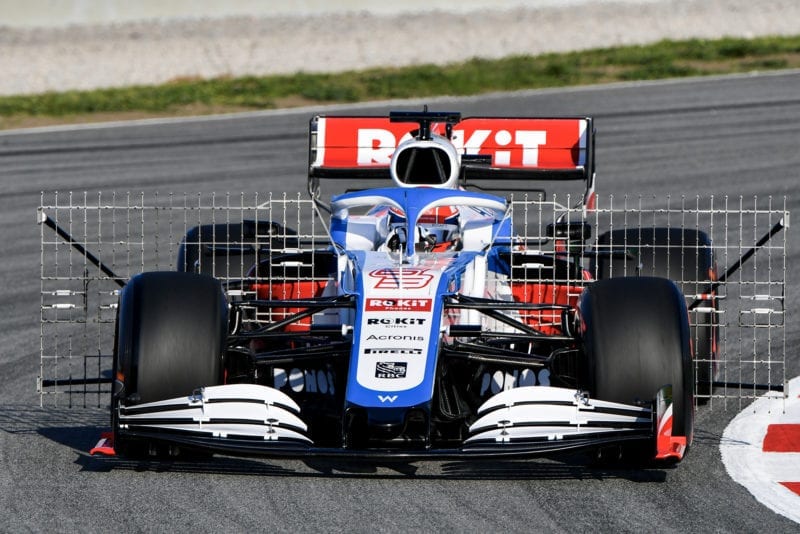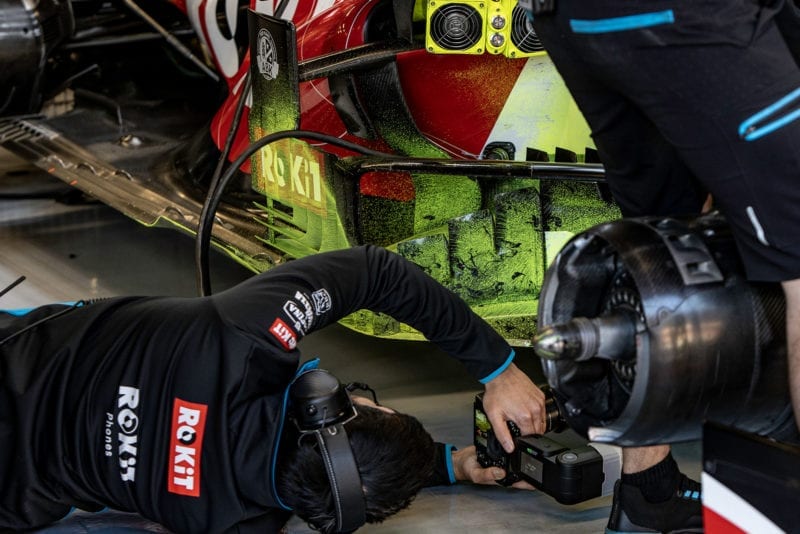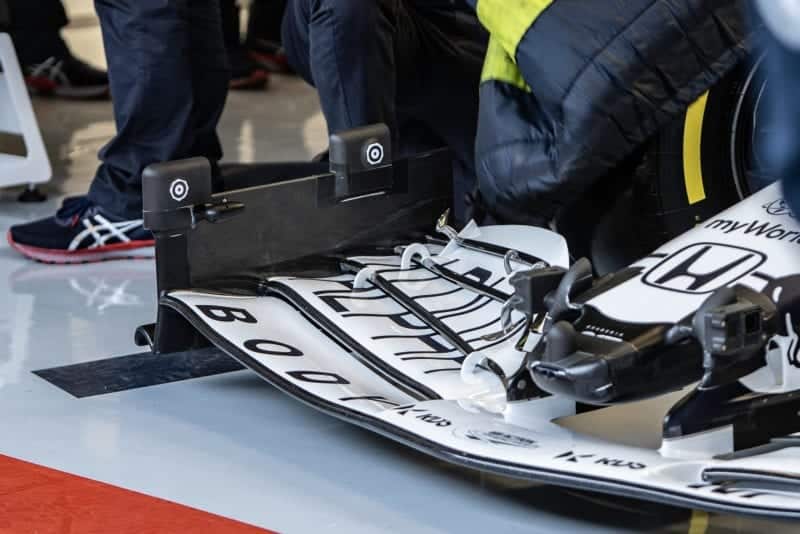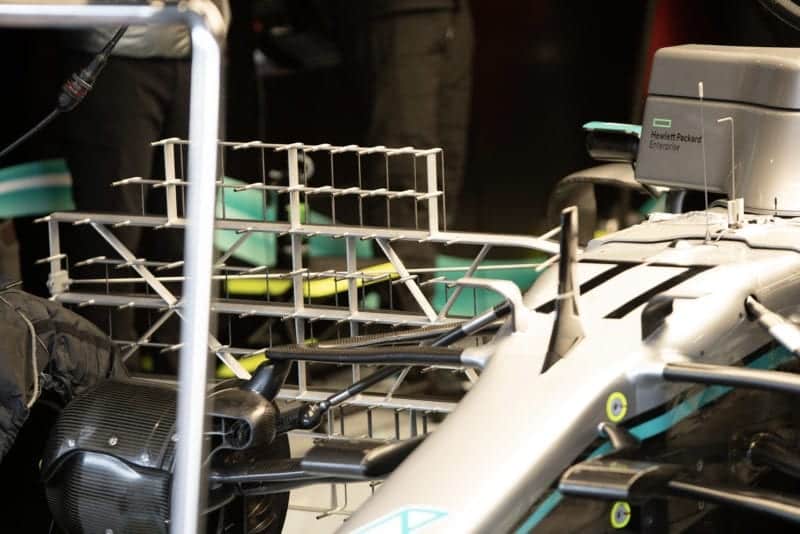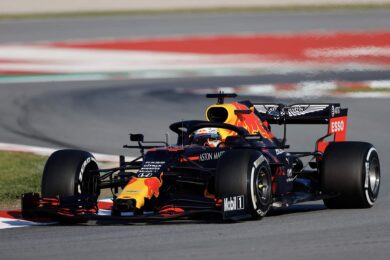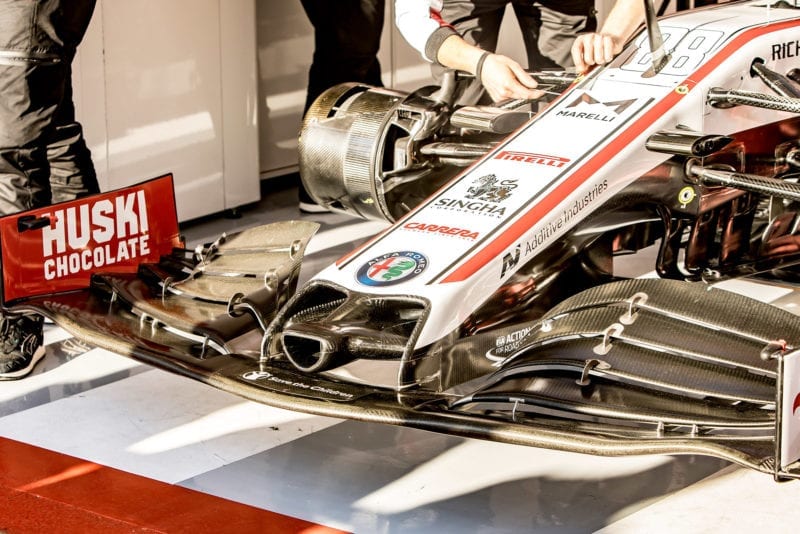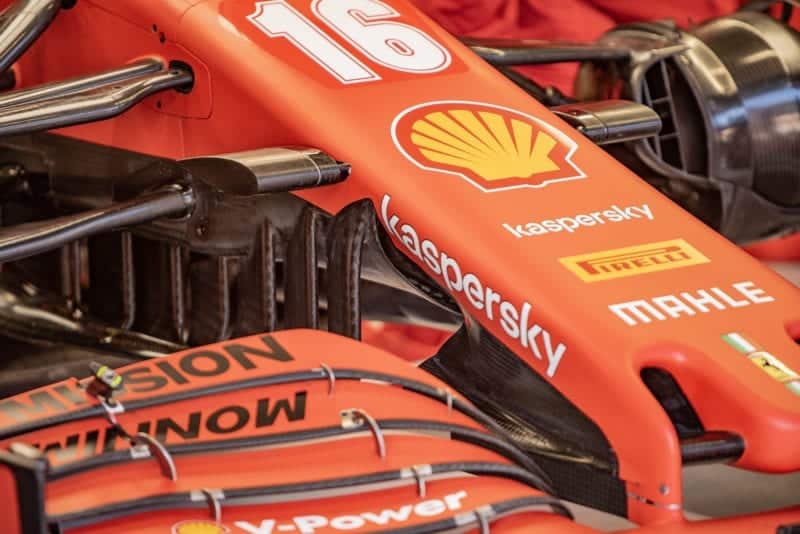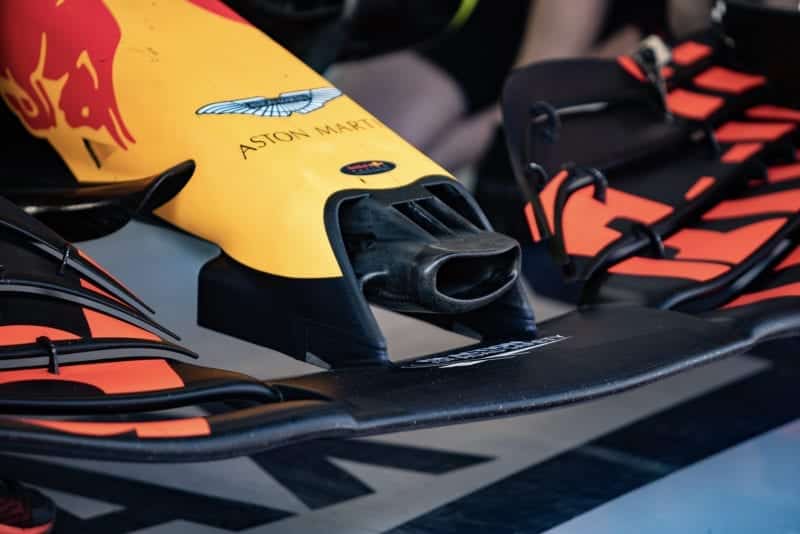The Williams pictured has a pair of such arrays and was also running smaller versions behind the rear wheels.
Another common sight will be lashings of flo-viz paint across panels, which does what it says on the tin. It’s a mixture of oil and luminous dye (normally yellow or green, but Williams seems to use a combination of yellow and blue) and is of such a consistency that it sticks to the bodywork but still flows easily.
As the car runs on track, the paint will follow the path of the air over the bodywork, giving a visual confirmation that the flow structures match those seen in CFD. For example, flow viz might flag up an area of stalled flow (where the airflow loses its energy) that appeared fine in simulations, warranting further investigation.
As a very visual representation of aerodynamic behaviour, flow viz will generally be cleaned straight off as soon as the relevant runs are complete, to prevent other teams having too much opportunity to analyse its distribution.
Then there are the other, more creative and individual testing setups. Take AlphaTauri, which ran a pair of action cameras bolted either side of the nose. The pointed directly towards a pair of 3D-printed blocks on the wing end plates with small target stickers, allowing the team to assess how much the wing was flexing at speed.
